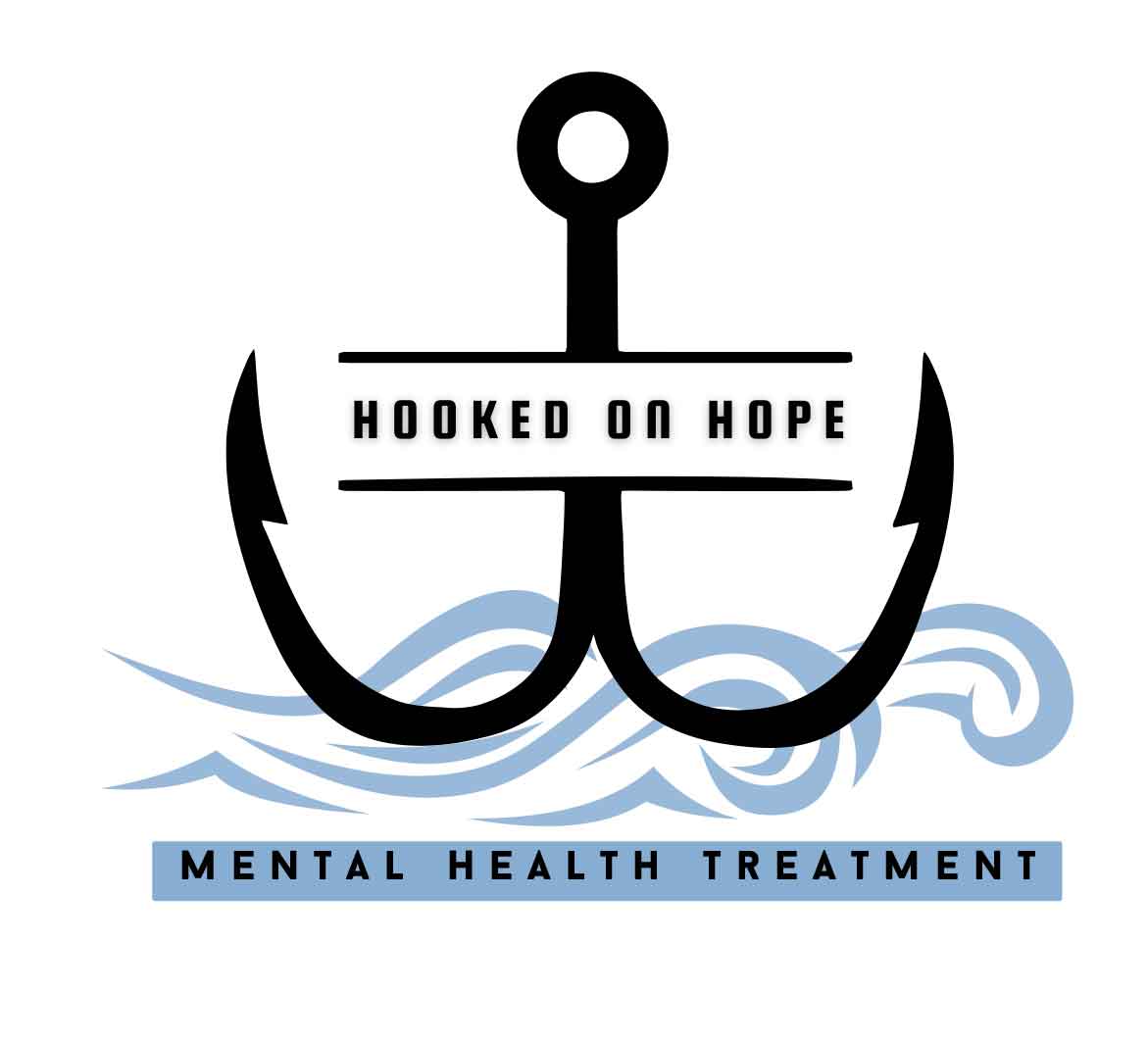Emotional dysregulation refers to a significant difficulty or an outright inability to effectively manage and regulate one’s emotional responses. Individuals experiencing emotional dysregulation often find themselves overwhelmed by intense emotional reactions, particularly negative emotions, struggling profoundly to control their feelings, and facing immense challenges in coping with everyday stress. This isn’t merely about having strong feelings; it’s about a persistent struggle to bring those feelings back to a manageable level once they arise. It’s a key aspect of understanding what is emotional dysregulation.
This comprehensive guide will delve into the intricacies of emotional dysregulation, exploring its various types, common causes, and profound impact on an individual’s life. We will also examine the crucial connection between ADHD and emotional dysregulation, discuss effective strategies for improving emotional regulation, and highlight how professional support can lead to a more balanced and fulfilling life. If you are in Atlanta and seeking support, Hooked on Hope Mental Health offers outpatient mental health treatment, which often includes addressing co-occurring emotional challenges.
The Foundations of Emotional Regulation: Three Key Types
The ability to manage our emotions effectively can broadly fall under three general types of emotion regulation, each contributing to a person’s overall emotional well-being:
- Attentional Control: This type of emotional regulation focuses on how individuals direct their attention. It involves the ability to concentrate, shift focus away from distressing stimuli, and prevent one’s mind from getting stuck on overwhelming thoughts or feelings. Strong attentional control allows a person to choose where their mental energy goes, rather than being hijacked by intense emotions.
- Cognitive Reappraisal: This form of regulation centers on how people interpret or “frame” their experiences. It’s about consciously changing the way one thinks about a situation to alter its emotional impact. For instance, instead of viewing a challenging task as a threat, one might reappraise it as an opportunity for growth. This mental reframing is a powerful tool in managing emotional responses.
- Response Modulation: This aspect of emotional regulation directly impacts the intensity and nature of a person’s reaction to any given event. It involves the ability to suppress or diminish an emotional response once it has been triggered, or to express it in a more measured and appropriate way. This could mean taking a deep breath instead of yelling, or choosing a constructive action over an impulsive one.
When these three types of emotional regulation are disrupted, it leads to what is emotional dysregulation, making daily life incredibly challenging.
Why is Emotional Dysregulation a Problem? Understanding Dysregulation Meaning
When a person experiences emotional dysregulation, the difficulty in managing feelings can have severe consequences. This inability to self-regulate often culminates in emotional outbursts, persistent anxiety, chronic depression, and a heightened vulnerability to maladaptive coping mechanisms. These can include substance abuse, self-harm, and, in severe cases, suicidal thoughts. The sheer overwhelming nature of uncontrolled emotions can feel unbearable, driving individuals to seek any form of relief, even if it’s harmful.
If you or a loved one are experiencing suicidal thoughts, please seek help immediately. You are not alone. You can call or text the National Suicide Prevention Lifeline at 988, or call 911 for immediate emergency assistance. Reaching out is a sign of strength.
The widespread impact of dysregulated emotions extends to almost every area of life. It can severely impact personal relationships, making it difficult to maintain stable connections due to unpredictable emotional swings or intense reactions. Academic and professional performance can suffer as concentration dwindles and stress becomes unmanageable. Overall quality of life diminishes as individuals feel constantly on edge, misunderstood, or isolated. Understanding this profound dysregulation meaning is the first step toward seeking help.
The Link Between ADHD and Emotional Dysregulation
It’s a common misconception that ADHD is solely a disorder of attention or hyperactivity. In reality, ADHD and emotional dysregulation are frequently intertwined. Many individuals with attention-deficit hyperactivity disorder (ADHD) experience intense emotions that prove incredibly difficult to manage and regulate. This isn’t a character flaw but rather a neurological challenge rooted in how the ADHD brain processes and responds to emotional stimuli.
For those with ADHD, it can be particularly challenging not only to regulate strong emotions but also to simply express them in a healthy way or to shift focus away from an overwhelming emotional state.
Emotional dysregulation for individuals with ADHD can manifest as:
- Difficulty finding emotional balance: Rapid shifts between emotional states, from extreme happiness to deep despair, often triggered by minor events.
- Struggling to move on from conflict: An inability to mentally disengage from disagreements or perceived slights, leading to prolonged emotional distress.
- Negative thought loops/rumination: Getting stuck in cycles of overthinking, replaying negative events, or dwelling on perceived failures, which can be exhausting and debilitating.
This intrinsic connection means that effective treatment for ADHD often needs to address emotional dysregulation directly to improve overall functioning and well-being. Recognizing that ADHD and emotional dysregulation frequently co-exist is vital for accurate diagnosis and comprehensive treatment planning.
The Power of Emotional Regulation: A Balanced Life
The ability to master emotional regulation is transformative, offering profound benefits across all facets of a person’s life. Strong emotional control significantly enhances one’s overall health and well-being, improves work and school performance, and is foundational to building and maintaining healthy relationships.
When an individual possesses emotional control, they can cultivate a deeper sense of calmness and happiness, even when facing significant stress or adversity. For example, during difficult life transitions or experiences of loss, individuals with strong emotional regulation skills are better equipped to process grief with patience, resilience, and the application of healthy coping mechanisms. This doesn’t mean they don’t feel pain, but rather that they can navigate it without being consumed by it. With a more balanced emotional state, it becomes significantly easier to cultivate strong, authentic relationships with others and to foster a healthy, compassionate relationship with oneself. It allows for clear communication, effective conflict resolution, and the capacity for genuine empathy.
Understanding the Types of Emotional Dysregulation
Emotional dysregulation can manifest in different ways, broadly categorized into three distinct types:
- Hyperarousal: Individuals experiencing hyperarousal often exhibit intense thoughts, feelings, and reactions that are significantly more extreme compared to those of the average person. This can present as frequent angry outbursts, overwhelming emotional meltdowns that seem disproportionate to the situation, or a constant state of heightened vigilance and reactivity.
- Hypoarousal: In contrast, hypoarousal involves an emotional tolerance that is too little or too low. This can manifest as emotional numbing, where a person feels disconnected from their own feelings or from others. It might involve social withdrawal, a sense of emptiness, or a profound disconnect between one’s body and emotions, often appearing as self-isolation.
- Emotional Numbness: While related to hypoarousal, emotional numbness is a distinct state where people feel empty, profoundly disconnected from themselves and those around them, and profoundly isolated. This can be a protective mechanism against overwhelming pain but ultimately prevents genuine connection and emotional processing.
These distinct presentations illustrate the diverse ways what is emotional dysregulation can impact an individual.
Common Examples and Causes of Emotional Dysregulation
Common examples of emotional dysregulation in daily life can include:
- Difficulty calming down: Even when a situation is clearly not significant or has passed, the person struggles to de-escalate their emotional response.
- Intense emotions for no apparent reason: Feeling overwhelmingly sad, angry, or anxious without a clear trigger or logical explanation.
- Low tolerance for frustration: Small setbacks or inconveniences leading to disproportionately strong emotional reactions.
- Sudden or frequent outbursts: Unpredictable explosions of anger, tears, or panic.
- Feeling overwhelmed by emotions: A sense of drowning in one’s feelings, unable to see a way out.
- Difficulty focusing: Inability to concentrate on anything other than overwhelming emotions or an emotional situation.
What causes emotional dysregulation is often multifaceted, stemming from various factors:
- Early Childhood Trauma: Stressful or life-altering events experienced in early childhood, such as abuse, neglect, or domestic violence, can sensitize the central nervous system and significantly disrupt the development of healthy emotional regulation skills, impacting individuals well into adulthood.
- Genetic Factors: Research, including studies cited in the World Journal of Psychiatry, indicates that specific genetic predispositions, such as certain alleles of the 5-HTTLPR gene polymorphism, have been associated with traits linked to emotion dysregulation.
- Environmental Factors: An individual’s current and past environment plays a substantial role. Family dynamics, social pressures, lack of supportive relationships, or even the physical environment can profoundly impact a person’s ability to process and respond to emotions effectively.
- Traumatic Brain Injury (TBI): A person who has sustained a traumatic brain injury can experience lasting changes in their cognitive and emotional processing abilities, directly affecting how they manage and respond to emotions. Disruption in the prefrontal cortex, a region crucial for emotional awareness and regulation, is often implicated.
- Co-occurring Mental Health Disorders: Emotional dysregulation is frequently a symptom or a significant feature of various mental health conditions. Comorbidities such as anxiety disorders, ADHD, autism spectrum disorder, bipolar disorder, borderline personality disorder, post-traumatic stress disorder (PTSD), fetal alcohol spectrum disorders, and disruptive mood dysregulation disorder can all impact brain function and lead to challenges with emotion regulation.
Seeking Help for Emotional Dysregulation: Your Path to Balance
Figuring out why you personally struggle to control your emotions begins with a process of self-observation and introspection, paying close attention to patterns in your behavior and feelings. One effective way to do this is by meticulously tracking moments when your emotions feel overwhelming. Writing down when and where these moments happen, what you were doing immediately beforehand, and precisely how you felt can help you identify specific triggers or situations that consistently set off strong reactions. These triggers could be particular people, specific places, or certain types of stress.
Another powerful approach is to tune into your physical reactions during emotional moments. Do you notice your heart racing, palms sweating, muscles tensing, or a knot in your stomach? These physical signs can provide crucial clues about when you’re feeling stressed, anxious, or overwhelmed, often even before you consciously recognize the emotion itself. It’s also immensely helpful to reflect on your past experiences. If you’ve navigated tough situations such as childhood trauma, significant loss, or prolonged periods of high stress, these experiences may be profoundly influencing how your brain and body handle emotions in the present. Recognizing these connections is a vital step toward healing.
Understanding the Long-Term Effects of Emotional Dysregulation
Left unaddressed, emotional dysregulation can lead to significant long-term challenges across all aspects of a person’s life. It can severely impair performance at work or school, make it incredibly difficult to maintain stable and healthy relationships, and significantly harm a person’s self-perception and worldview.
Additionally, chronic emotional dysregulation can lead to more serious long-term effects, including:
- Persistent anxiety and chronic depression, often exacerbating existing mental health conditions.
- Increased risk of self-harming behaviors as a desperate attempt to cope with overwhelming emotional pain.
- Development or worsening of eating disorders, where food becomes a way to exert control over internal chaos.
- Increased risk of suicidal ideation, as the constant emotional turmoil can feel unbearable.
- Engagement in unhealthy coping behaviors, such as substance abuse, using drugs or alcohol to numb or escape difficult emotions.
These consequences highlight the urgent need for intervention and learning effective emotional regulation strategies. The brain’s limbic regions, particularly the amygdala and insula, are linked to emotional reactivity, while prefrontal regions are responsible for emotional awareness and regulation. Disruptions in the prefrontal cortex, often seen after traumatic brain injuries, can play a significant role in emotional dysregulation.
Coping Strategies for Managing Dysregulated Emotions
Beyond professional therapy, there are several practical coping strategies individuals can learn to manage emotional dysregulation in daily life. These techniques empower you to gain a greater sense of control over your emotional responses and prevent intense feelings from spiraling out of control.
- Mindfulness Practices: Integrating mindfulness into your routine is incredibly beneficial. This involves intentionally focusing on the present moment, observing your thoughts, feelings, and bodily sensations without judgment. Simple exercises like deep breathing, body scans, or mindful walking can help ground you when emotions become overwhelming. Regular mindfulness practice can enhance your ability to pause before reacting, giving you space for a more considered response.
- Distress Tolerance Skills: These skills are designed to help you get through a crisis or an intense emotional wave without making the situation worse. They don’t aim to resolve the emotion immediately but to help you survive it. Examples include self-soothing techniques (e.g., listening to calming music, taking a warm bath), distracting yourself with engaging activities, or radical acceptance of the current moment. These are crucial for navigating moments of extreme emotional discomfort.
- Interpersonal Effectiveness Skills: Emotional dysregulation often impacts relationships. Learning to communicate your needs clearly, set healthy boundaries, and navigate conflict constructively can significantly reduce interpersonal stress, which is a common trigger for dysregulated emotions. Role-playing difficult conversations or practicing assertive communication can build confidence.
- Emotion Identification and Labeling: Simply being able to identify and label the specific emotion you’re experiencing can reduce its intensity. Instead of “I feel bad,” try to pinpoint: “I feel frustrated,” “I feel sad,” “I feel overwhelmed.” This cognitive act can create a small but significant distance from the emotion, making it less all-consuming.
- Building a Support System: Connecting with trusted friends, family, or support groups can provide validation, perspective, and a sense of belonging. Sharing your experiences can reduce feelings of isolation and offer alternative coping strategies. It’s important to surround yourself with people who understand and respect your journey.
- Healthy Lifestyle Habits: Fundamental to emotional well-being are consistent routines for sleep, nutrition, and physical activity. Lack of sleep can significantly impair emotional regulation. A balanced diet provides the necessary nutrients for brain health, and regular exercise is a powerful mood regulator, helping to release tension and improve overall mental state. These are foundational elements of managing dysregulation and improving emotional regulation.
Emotional Dysregulation in Children: Early Signs and Support
Emotional dysregulation is frequently observed in children, often manifesting as frequent tantrums and intense emotional outbursts. While some of these outbursts are a normal part of developmental stages as children learn to process and communicate their emotions, their persistence or escalation into consistently violent or prolonged behaviors warrants professional attention. If these behaviors don’t decrease as a child ages, it might indicate an underlying issue that needs to be addressed.
Is emotional dysregulation typical in childhood? It is indeed normal for very young children, such as two-year-olds, to have temper tantrums. They are still developing their emotional vocabulary and coping skills. However, as children mature, they are expected to learn how to regulate their emotions more effectively, leading to a natural decrease in the frequency and intensity of tantrums and outbursts. When this developmental progression is hindered, emotional dysregulation can be a sign of developmental delays or underlying conditions.
Emotional dysregulation can be present in children with developmental differences such as ADHD or autism spectrum disorder, or in children diagnosed with mood and anxiety disorders. Clinicians, including pediatricians, child psychologists, and primary care providers, play a crucial role in charting developmental stages and assessing children for any possible disorders that may contribute to their emotional struggles. Early identification and intervention are key to providing children with the tools they need to manage their emotions effectively.
What causes emotional dysregulation in kids? Similar to adults, the causes are varied:
- Trauma: Children exposed to traumatic experiences (e.g., abuse, neglect, witnessing violence) can develop emotional dysregulation as a coping response.
- Stressful Life Events: Significant stressors like parental divorce, moving, or bullying can overwhelm a child’s developing emotional capacity.
- Mental Health Disorders: Conditions such as anxiety disorders, depression, oppositional defiant disorder (ODD), or ADHD inherently impact a child’s emotional regulation abilities.
How can you help your child with emotional dysregulation?
- Talk about emotions: Help them identify and name what they’re feeling. Use emotion-labeling (“I see you’re feeling frustrated right now”).
- Teach coping strategies: Guide them through healthy ways to manage emotions, such as deep breathing, counting to ten, or taking a break.
- Validate their feelings: Acknowledge their emotions as real, even if you don’t agree with their behavior (“It’s okay to feel angry, but it’s not okay to hit”).
- Show acceptance: Let them know they are loved regardless of their emotional struggles.
- Avoid reinforcing tantrums: Do not give in to demands made during an outburst; instead, address the behavior once they are calm.
The three R’s in helping a child who is emotionally dysregulated to regulate are: Regulate, Relate, and Reason.
- Regulating: First, help your child feel safe and calm. This might involve physical comfort, removing them from a stimulating environment, or using calming techniques together.
- Relating: Validate their feelings and ensure they feel heard and understood. Speak clearly, in short sentences, and at their developmental level to connect with them and let them know their emotions are acknowledged and okay.
- Reasoning: Once calm, talk to your child about rules, limits, or boundaries you have set in a way they can learn from and understand. Reassure them of your support, but clearly communicate what behaviors are unacceptable.
Medication for emotional dysregulation in children, such as selective serotonin reuptake inhibitors (SSRIs) for disruptive mood dysregulation disorder, may sometimes be considered. However, it is crucial to consult with your child’s healthcare provider to determine the safest and most effective interventions.
Support for Emotional Dysregulation: Hooked on Hope Mental Health in Atlanta
Living with emotional dysregulation, or supporting someone who does, can be incredibly challenging. If you are struggling, or your relationships are strained, seeking professional help is a powerful step towards healing.
At Hooked on Hope Mental Health, we understand the profound impact that emotional dysregulation can have on daily life, including its common overlap with conditions like ADHD and its role in substance use. We offer compassionate and evidence-based outpatient mental health treatment in Atlanta, which often includes comprehensive support for improving emotional regulation skills.
Our expert team utilizes therapies proven to be highly effective for emotional dysregulation, such as:
- Dialectical Behavior Therapy (DBT): DBT is specifically designed to help individuals learn skills in mindfulness, distress tolerance, emotional regulation, and interpersonal effectiveness. It focuses on balancing acceptance with change, teaching practical strategies for managing intense emotions and improving relationships. DBT is particularly beneficial for those experiencing severe emotional dysregulation, including individuals with Borderline Personality Disorder, but its skills are broadly applicable.
- Cognitive Behavioral Therapy (CBT): CBT is a versatile and highly effective approach that helps individuals identify and challenge unhelpful thought patterns and behaviors contributing to emotional distress. It equips clients with tools to reframe negative thoughts, develop healthier coping mechanisms, and respond more constructively to emotional triggers.
- Mindfulness-Based Therapies: These techniques train individuals to be present in the moment, observe their thoughts and emotions without judgment, and respond more skillfully rather than reacting impulsively. Mindfulness practices like meditation can foster a greater sense of calm and self-awareness, which are foundational to improved emotional regulation.
Beyond these core therapies, our programs may also incorporate medication management (in consultation with qualified medical professionals to treat underlying mental health disorders like ADHD), psychoeducation, and family support. We believe in empowering you to understand the root causes of your emotional struggles and equip you with practical strategies for a more balanced and fulfilling life.
If you are ready to explore effective strategies for emotional regulation and seek support for related challenges, including substance abuse, Hooked on Hope Mental Health is here for you. Contact us today at 470-287-1927 or via our contact form to learn more about our outpatient mental health treatment in Atlanta and begin your journey towards emotional balance and well-being.
Frequently Asked Questions About Emotional Dysregulation
What is emotional dysregulation?
Emotional dysregulation is a difficulty or inability to manage and control emotional responses effectively. Individuals often experience intense emotions, struggle to calm down, and find it hard to cope with stress.
What are the main types of emotional dysregulation?
The main types are hyperarousal (intense, overwhelming reactions), hypoarousal (emotional numbing, disconnection), and emotional numbness (feeling empty and isolated).
Is emotional dysregulation a recognized disorder on its own?
While “emotional dysregulation disorder” isn’t a formal standalone diagnosis in the DSM-5, emotional dysregulation is a key symptom or feature of many recognized mental health disorders like Borderline Personality Disorder, ADHD, PTSD, and anxiety disorders.
Does ADHD commonly involve emotional dysregulation?
Yes, a significant number of individuals with ADHD experience emotional dysregulation. Their brains often struggle with the processes that help manage intense emotions, leading to challenges with emotional balance, shifting focus from strong feelings, and rumination.
What are common causes of emotional dysregulation?
Causes can be multifaceted, including early childhood trauma, genetic factors, stressful environmental conditions, traumatic brain injuries, and co-occurring mental health disorders (like anxiety, depression, bipolar disorder).
What are the long-term effects of unmanaged emotional dysregulation?
Long-term effects can include chronic anxiety and depression, difficulties in relationships, academic or professional struggles, increased risk of self-harm, eating disorders, suicidal ideation, and unhealthy coping behaviors like substance abuse.
Can emotional dysregulation be “fixed” or treated?
Yes, emotional dysregulation can be significantly improved with appropriate treatment. Psychotherapies like Dialectical Behavior Therapy (DBT) and Cognitive Behavioral Therapy (CBT) are highly effective. Medication may also be used to treat underlying conditions.
What role does mindfulness play in emotional regulation?
Mindfulness techniques help individuals become more aware of their emotions in the present moment without judgment. This practice can foster calmness, reduce reactivity, and improve one’s ability to choose a skillful response rather than an impulsive reaction.
Can emotional dysregulation affect children?
Yes, emotional dysregulation can be seen in children, often through frequent tantrums and outbursts. While some are normal developmental stages, persistent or violent outbursts may indicate an underlying issue like ADHD, anxiety, or trauma, requiring professional assessment.
How can I support someone I know who is struggling with emotional dysregulation?
You can support them by listening empathetically, validating their feelings without necessarily agreeing with their actions, setting clear and healthy boundaries, practicing patience, and reminding yourself that they are struggling. Encourage them to seek professional help.
How does traumatic brain injury (TBI) relate to emotional dysregulation?
TBI can directly cause changes in how the brain processes and responds to emotions. Damage to the prefrontal cortex, which is vital for emotional awareness and regulation, can significantly impair a person’s ability to manage their feelings, leading to dysregulation.
Are there specific exercises I can do to improve my emotional regulation?
Yes, exercises like deep breathing, progressive muscle relaxation, journaling to identify triggers and emotional patterns, and engaging in calming activities such as meditation or yoga can significantly improve emotional regulation over time.
What is the meaning of “dysregulated” in common language?
When someone is described as “dysregulated,” it means their emotional responses are out of sync with the situation. They might react with extreme intensity to minor stressors, struggle to calm down, or appear emotionally numb when a strong reaction might be expected.
How does emotional disregulation impact relationships?
Emotional disregulation can severely strain relationships due to unpredictable mood swings, intense arguments, difficulty with empathy, impulsive actions, and withdrawal. This often leads to misunderstandings, hurt feelings, and a breakdown in trust.
Can certain medications help with emotional deregulation?
Medication may be used to treat underlying mental health conditions that contribute to emotional deregulation, such as antidepressants for depression or stimulants for ADHD. The goal is to stabilize brain chemistry, which can indirectly improve emotional regulation.
Why might an “adhd and emotional dysregulation” combination be particularly challenging?
The combination of ADHD and emotional dysregulation is challenging because ADHD impacts executive functions (like impulse control and attention), making it harder to manage strong emotions. This can lead to more frequent and intense emotional outbursts, difficulty moving past negative feelings, and heightened sensitivity to rejection.








